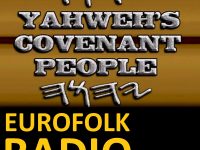The Indo-Aryan Brahmins Used Hebrew to Inform Sanskrit
An Aryan Brahmin, descendant of Abraham.
Sanskrit is an offshoot of Hebrew.
Steve and Eli demolish the completely false assertion by Jews and academics that Hebrew is unrelated to Sanskrit:
Although this Indian author argues that the Hebrew language evolved from Sanskrit (it;’s actually the other way around), he nevertheless reveals the connections between Hebrew and Sanskrit, a fact which is routinely denied by brainwashed academics, who falsely believe that the Hebrew is unrelated to the Indo-Aryan languages. The reason they believe this is because of Jewish lies about their Hebrew/Shemitic/Israelite origins.
Although Dr. Abbas confuses Hebrews with Jews, he nevertheless argues for a strong relationship between Hebrew and Sanskrit. The reality is that the Brahmins of India were the descendants of Abraham and Keturah. Abraham sent the sons of Keturah to the east so that they would not interfere with Isaac’s inheritance. Since the Hebrews were Adamic Aryans, not mongrel Canaanites, it is evident that the Indo-Aryans are the descendants of Abraham.
Hebrews And Vedic Brahmins
Dr. Samar Abbas, Aligarh, India
EDITORIAL, Jul 14 (VNN) A Review
In 1979 the Oriental Institute at Baroda published a paper entitled “The Hebrews belong to a branch of Vedic Aryans.” This was a follow-up to a previous article on the same topic published by the same author, Prof. Madan Mohan Shukla, in the Vishveshvaranand Indological Journal in 1976. The basic thesis of these papers is that the Hebrews represent an offshoot of Vedic Brahmins. It may be instructive to review Shukla’s papers as they serve to illustrate the common origin of the Jews and Brahmins. As Shukla’s papers are very difficult to obtain both within and outside India, and are virtually out of reach for laypersons, I am reproducing extensive tracts from them for reference purposes.
1. VOCABULARY
One of Shukla’s strong points is the considerable vocabulary shared by Hebrew and Sanskrit. Indeed, M.M. Shukla has concentrated on providing a large list of of words which are common to Hebrew and Sanskrit. Thus, he provides the following examples:
“The word, ‘Svah’ means ‘heaven’ or ‘paradise’ in Sanskrit. This word, written as ‘svam’ may assume the form, ‘Sam-yim’ which means, ‘sky’ and/or ‘heaven’ in Hebrew, while it may become ‘Asvah’ under the influence of the principle of vowelization. Sometimes, the sound ‘a’ may change to ‘ya’ and thus, the derivation, ‘Asvah’ or ‘Asuah’ may change to ‘Yasuah’ which is nearer to a Hebrew word, ‘Yasuah’ (salvation)…. It may be mentioned that ‘Appa’ is a Marathi word. The derivation ‘Appa’ may further change to ‘Abba’, which is a Hebrew word… Now let us consider the root – word ‘Svas’. It may change first to ‘Vas’ and thence to Bas or ‘Bes’ which is a Hebrew word though with different meaning, ie. ‘daughter’.” (Shukla 1979, p.45)
He also suggests that Surios gave rise to Kurios, or Kur (ibid., p.48) Shukla notes that ‘Abru’ and ‘Uparohita’ exist in Persian and Avadhi Hindi, distinct from Skt. bhru and purohita (Shukla 1979, p.44)
Describing the process of vowelization, he notes, “the Punjabis would pronounce the words station, putra and Krsna as satation, puttar, and Kishan respectively.” (Shukla 1976, p.41)
Building upon this, he writes, “the word Joasava may be transformed into Joasaph, from which the derivation of the word Joseph is a simple matter. Thus we can see that the Biblical name Joseph can be derived from an ancient Indian name, jayasva.” (Shukla 1976, p.42)
Continuing in this line, he notes, “Adam. This word seems to have been derived from the Sanskrit word A-dityam, from the Vedic pronunciation of this word as A-ditiam.” (Shukla 1976, p.45)
In addition, “The meaning of the root-word as in Sanskrit is ‘to eat’, and ‘to enjoy’ or ‘to be merry’. Hence if we pronounce the term upasana as ‘upasana’, then it would mean, ‘Eating before God’, and ‘Being merry before God.'” (Shukla 1976, p.46)
Another striking similarity exists with regard to script: “Now, the Hebrew script, like those of Arabic and Kaithi, does not use the word signs to indicate the pronunciation of its consonants.” (Shukla 1976, p.44).
2. PRIESTHOOD
One of the strongest points for a common Brahmin-Jewish origin is the fact that in both communities have been endogamous priests from the earliest times of their recorded history: “Chosen People of God: It may also be observed in this respect that the Hebrews, as well as their Indian counterparts, Brahmins, consider themselves as the “Chosen People of God”. The Hebrews started their corporate career in history as a “Kingdom of Priests” (Exodus/19/6). Likewise, the Brahmins have also been a “Community of Priests” since the dawn of their history.” (Shukla 1979, p.54)
The colonialists were the first to notice the similarity between Brahmins and Jews, namely that Brahma not only corresponds with Abraham, but that his consort Sarasvati corresponds to Sarah. Shukla also notes the story in Genesis 29, 32-33, 20/12.
3. BIBLICAL FIGURES
Citing his own work ‘The Holy Bible – A Source book of Ancient Indian History’, a paper submitted to All Indian Oriental Conference (1976) held at Dharwar, he notes that “We have already tried to equate Brahma, Sarasvati, Manu and Bali with the Biblical Abraham, Sarai, Noah and Peleg.” (Shukla 1979, p.53) Not only that, but Shukla holds that the Jewish Laban and Brahmanic Lavana coincide:
“It is noteworthy to note in the above context that the sister of Lavana on the Indian side becomes the daughter of Laban in the Biblical account. It may also be mentioned in this respect that while Sarasvati is said to be the daughter of Brahma in accordance with the Indian tradition, her Biblical counterpart, Sarai, has been described as the sister of Abraham. In this context, we would like to remind our readers of a previous discussion of ‘Svas’, the root-word of the Sanskrit ‘svasar’ (sister) which becomes ‘Bes’ to mean ‘daughter’ in the Hebrew language.” (Shukla 1979, p.54)
Equally striking is Shukla’s derivation of ‘Mary’ from ‘Matri’: “the words ‘Mary’ and ‘Mariam’ could be derived from a Sanskrit word, matr, meaning ‘mother’.” (Shukla 1976, p.42)
“Similarly the word, ‘Mari’ or ‘Mary’ may also be derived from Sanskrit ‘Matri’.” [and Shukla notes that Mary is worshipped as a mother goddess.]… “The word Adam is derived from a Hebrew word, ‘Adamah’ which means ‘the earth’. Similarly the Skt. ‘Adityam’ is derived from ‘Aditi’ which also means the Earth. Hence the primary meaning of both the words, ‘Adam’ and Adityam would be ‘earthly one’. (Shukla 1979, p.47)
His papers provide detailed etymologies of the word ‘Abraham’:
“The word ‘Adam’ can also be derived from Sanskrit ‘Adityam’ with the help of the rule of haplology also. Haplology is the name given by Bloomfield to the phenomenon where of the two similar syllables following each other, one is dropped. The word ‘Adityam’ will change to ‘Adam’ under the influence of this rule in the following way: –
Adityam -> Adatam -> Adadam (t -> d) -> Adam (Haplology)
It would be interesting to note here that the Sanskrit ‘Adityam’, represented by the same rule would change to ‘Aton’:
Adityan -> Aditan -> Atadan (d -> t) -> Atan ->: Aten /Aton (Shukla 1979, p.48) This is interesting, for it provides an Indo-European derivation for the Egyptian God Aton.
Moreover, “the Vayu Purana mentions Manu as Bharata” (Shukla 1979, p.56)
Intriguing is Shukla’s derivation of Rcam: “We may consider another Sanskrit word, ‘Rcam’ which may become Arcam and then ‘Aleichem’ (r -> l) which is a Hebrew word.” (Shukla 1979, p.46)
Shukla also provides certain other etymologies, and repeatedly derives Adam from Adityam, and Mary from Matr (Shukla 1979, p.46) He also postulates a derivation of Gr. Adonis from Aton, and notes that Heb Adonay -> Lord. (ibid., p.48).
“It can be shown that the Hebrew word, ‘Elohim’ can be derived from the Skt. ‘Brahma’:
Brahma -> Ibrahim (rule of vowelization) -> Ibrahim (rule of stress) -> Ilohim (r -> l) -> Elohim
Hence the expression ‘Adonay Elohim; becomes equivalent to the Skt. ‘Aditya-Brahma’.” (Shukla 1979, p.48)
Furthermore, he notes, “Savitr -> Savitru (r -> ru) -> Sabiru (v -> b) -> Habitru (s -> h)” -> Habiru -> Habiru -> PR Egyptian, Apiru, Ibru, Ibri, Ibrin.” (Shukla 1979, p.51)
Another etymology is: (Shukla 1979, p.53)
Iksvaku -> Issvahu (no k) -> Issahu (va -> a) -> Ishak, Isaac.
Further, Shukla writes, “It may also be mentioned here that Satarupa, the name of the daughter-wife of Manu, is also one of the names of the daughter-consort of Brahma” (Shukla 1979, p.53) From this we may note the case of Noah’s daughters and Manu, the flood survivor.
Another interesting derivation is also supplied: “Krsna -> Christ. We know that the Bengali pronounciation of the word Kr.s.n.a is Kriste. ‘Christo’ or ‘Christ’ is only a matter of spelling.” (Shukla 1976, p.42)
Moreover, “Yehasua has been derived from a Sanskrit word, Yasasva.” (Shukla 1976, p.42)
It would also appear that Jehova is also related to a Sanskrit word: “This word [Jehova] could, however, be equated with the Vedic word jahvuh, which may be considered, grammatically, both as an adjective and a proper noun. In the former sense, the word, jahv.uh has been used at least four times in the R.gveda. Thus, it has been used as an {p.44} attribute of Lord Agni (RV 3.1.12), as an attribute of Lord Indra (RV 8.13.24), as an attribute of Lord Soma (RV 9.75.1) and as an attribute of Lord Agni (RV 10.110.3).”
4. BHARATA, IBHRI, IBERIA HEBREWS
One of Shukla’s most striking points is his discovery of an etymological connection between the words ‘Hebrew’ and ‘Bharat’:
“Hebrews and Rigveda: Let us first understand the real nature of the Rig Veda. As observed by Sri D.P. Mishra, “Both Devdasa and Sudasa belonged to the tribe of the Bharatas or T?tsu-Bharatas and won a number of victories over their Dasa and Aryan enemies. It is their wars and victories which have been repeatedly sung by their priests in the Rig Veda, and we have therefore no hesitation in naming it as (p.56) ‘Bharata-Veda’ or the Veda of the Bharatas and the Bharatas themselves as the Rigvedic Aryans. If the Rigveda supposed to deal with the entry of the Aryans into India, we would like to argue that it deals only with the entry of Bharatas …” 34 [34. Studies in the Proto-History of India”, D.P. Mishra, p.133]” (Shukla 1979, p.55)
Further, “Bharata was the first king according to Jaina traditions” (Shukla 1979, p.56)
“Now let us consider the word “Bharata’. This word is formed from the Sanskrit ‘Bhara’, which under the sway of the rule of vowelization (Prothesis), may assume the form ‘Ibhar’, ‘Iber’, ‘Ibhray’, ‘Ibhri’, ‘Ibri’, ‘Ibrini’ etc. which have been equated with the term Hebrew.” (Shukla 1979, p.56) He then continues:
“[T]he Hebrews may be related to the Rigvedic Aryan tribes of Bharatas … In this way, we can confidently say that the statement ‘Rigveda is essentially the Bharata-Veda’, means that it is the ‘Veda of the Hebrews’. It is hence no wonder to find close similarity between the Rigveda and the Holy Bible.” (Shukla 1979, p.56)
Intriguing is his statement that, “The famous Vrsakapi and some other allied Saktas can be best understood and appreciated only in the form of the Book of Esther.” (Shukla 1979, p.56) “Further discussion of the term ‘Hebrew’: We have mentioned earlier that another meaning of the term Savitr (the Sanskrit form of the term Hebrew) is Brahmana. Now let us consider the word ‘Brahmana’. If we remove the suffix ‘mana’ from this word, then it becomes ‘Brah’, which, if pronounced repeatedly, gives the word, ‘Habra’ which is nearer to the word ‘Hebrew’. Also that both the words, written without vowel signs, would give ‘BRH’ and ‘HBR’ respectively. The similarity is evident.
It would be interesting to note another Sanskrit word, ‘vipra’ (a synonym of ‘Brahmana’) in the same connection. The word ‘vipra’ becomes ‘Ipar’ in colloquial Marathi. Now consider the word ‘Ipar’. This word may assume the forms ‘Iber’ (p -> b), Ibri, Ibhray, Ibrani, etc. and, on being subjected to the reverse operations of the rules of prothesis and anaptyxis in succession, would reduce ‘Pr’ to ‘Prm’, which we have already shown to be the [other form] of Hebrew’. This leads us to the conclusion that the Hebrews can be identified unhesitatingly with these Indian Brahmins who had migrated from India in the very early dawn of the Vedic period.” (Shukla 1979, p.54)
The rule of prothesis Shukla describes as the process of vowels developing before consonants, eg. Skt. rudhira, rajah, laghu, nr, nakha, naman which he claims led to Greek eruhtros, erobos, elakus, aner, onuch, onoma (ibid, p.44). The rule of anaptyxis is the insertion of vowel betwen combination of words (ibid, p.44).
Also, in both Avestan and Avadhi Hindi, the words Manthara and Manthra are used, and not the Sanskrit mantra (Shukla 1979, p.47).
Finally, he notes, “We have derived the word ‘Hebrew’ from the Sanskrit word, ‘Savitr’ (Shukla 1979, p.52)
More controversial would be Shukla’s following statement:
“On the basis of the above since some similiarity of Jews and Arabs Sabeans.”
5. CUSTOMS
Describing the strength of his evidence, Shukla notes, “Sometimes, these evidences become so strong as may lead one to suspect that the Hebrews might have really been an offshoot of Vedic Aryans.” (Shukla 1976, p.41)
Some of his strong evidence relates to common customs:
“It may also be mentioned here that like a devout Jew, a devout Hindu is also required to pray three times a day, morning, afternoon and evening (traikalika-sandhya).
To cite still another similarity in religious practices between the Hindus and the Jews, Hayyim Schauss notes in his Jewish Festivals, p.64: “When all is ready, the Samaritans form groups about the {p.47} sacrificial animals, and after uttering the prescribed blessings, fall upon the roast meat, pulling it hastily to pieces with their hands. Portions are brought to the women and children in the tents. Everybody eats rapidly and in twenty minutes all that is left is a mound of bones.”
Here it is worthwhile to note: (a) Though turned largely vegetarians now, the Brahmins of India present almost similar scenes of eating hastily in their religious and ritual grand-feasts.
(b) Like Hebrews, the Hindu womenfolk also sit in seclusion to eat their share in their public feasts.
(c) Any person, who eats too rapidly (hurridly, impatiently), or too much, is called a ‘haboru’ in the Hindi language, particularly in the Avadhi dialect… The resemblance between the words Hebrew and Haboru is particulary striking” (Shukla 1976, p.46-47) “there is a strong case to suspect or speculate that either the Hebrews really belong to a branch of Vedic Aryans, or that they had been in direct touch with the latter at some remote and unrecorded period of their history.” (Shukla 1876, p.47)
6. ANTHROPOLOGY
Citing evidence from anthropology for his thesis, Shukla notes:
“The above discussion also leads us to the conclusion that the term ‘Bharatavarsa’ (-> India) actually means ‘the land of the Hebrews’, a conclusion which is fully supported by the observation of Prof. S.K. Chatterji that, “the third Mediterranean strain, the so-called ‘Oriental’ one, commonly miscalled the Semitic or Jewish, with a pronouncedly long nose and fair in skin, is found in the Punjab, in Sind, in Rajputana and in Western UP, and …. in other parts of India” [R.C. Majumdar, ed. Vedic Age, 1965, p.145-6]” (Shukla 1979, p.57)
To this we may add the brachycephaly common to both Jews and Brahmins.
7. SABEANS
Shukla agrees with the generally accepted concept of a common bond between Jews and Sabaeans or Yemenites:
“Now, let us consider the word, ‘Sabean’. We have already mentioned that ‘Savi’ is the root-word of the term ‘Savitr’ and hence the term ‘Sabean’ can be shown to be the equivalent of the word, ‘Savitr’, ie. Hebrew. What we mean is that the Sabeans and the Hebrews were 2 twigs of the same branch.” (Shukla 1979, p.55)
8. COW-WORSHIP
It may be instructive to cite additional facts in favour of the common origin of Jews and Brahmins which have arisen after Shukla’s work. One striking common feature linking Brahmins with Jews is that of cow-worship. When Moses descended from Mt. Sinai, he found the Jews worshipping the golden calf. Likewise, “Ex. xxxii. attributes the making of a golden calf to Aaron at Mount Sinai,” and “Jeroboam, in making the sanctuaries of Beth-el and Dan the recipients of his royal patronage, placed in them images of Yhwh made of gold in this calf form, the fame of which went far and wide (compare I Kings xii. 23; II Kings x. 29; II Chron. xi. 14, 15).” (Jastrow Barton 1906) Cow-worship was common amongst Hebrews:
“Among the Hebrews, as among the other agricultural Semites, the bull was associated with deity in a sacred character (see Ox). The form in which this thought found expression in Israel was in their representation of Yhwh by an image of an ox or bull made of gold (compare I Kings xii. 28).” (Jastrow Barton 1906).
There was also a “representation of Yhwh by an image of an ox or bull made of gold (compare I Kings xii. 28).” Finally, “the twelve oxen on which rested the great laver in the Temple of Solomon (I Kings vii. 25; II Kings xvi. 17; Jer. lii. 20) are regarded as evidence that there was some sacred character attached to the bull,” [ibid.].
The sacredness of the cow is likewise a fundamental part of Brahmanism:
“Dying, without the expectation of a reward, for the sake of Brahmanas and of cows, or in the defence of women and children, secures beatitude to those excluded (from the Aryan community, vahya.)” [Manu, X.62]
“I call on you the Sons of Dyaus, the Asvins, that a dark cow to my red kine be added.” [Rig-Veda, Book X, Hymn 61].
“He shall not touch with his foot a Brahmana, a cow, nor any other (venerable beings).” [Apastamba, Prasna I, Patala 11, Khanda 31]
9. MOON-WORSHIP
However, in his section on “Sun-worship”, M.M. Shukla has made a mistake, for it is moon-worship which links Jews and Brahmins rather than sun-worship. Selenolatry (moon-worship) was common to both Brahmans and Jews. Sun-worship is a natural outgrowth of a cold northern climate, where the nourishing warmth of the Sun is considered the bringer of life. It is hence a characteristic of Indo-European populations, compare the Ahura Mazda of Zoroastrianism, the Mithra of Mithraism, Sol Invictus of Rome, Asshur of the Assyrians, and the Surya of the Sauras of India.
By contrast, moon-worship is a natural phenomenon of warm and desert regions, where it symbolises the refreshing coolness of the night, the opposite of the harsh and inhuman desert day. It thus arose amongst the Sumerians, where the capital was “Ur, the central home of the Semitic moon-cult” (Waddell 1929, p.388). The Old and New Testaments bear ample testimony to selenolatry amongst Hebrews (Deut. xxxiii. 14; Jer. vii. 18, xliv. 17; Job, xxxi. 26-27;, Judges viii. 21, 26; Isa. iii. 18; Cant. vi. 10; Ps. lxxii. 5, 7, lxxxix. 37; Isa. xiii. 10 xxiv. 23; Joel ii. 10, ii. 31; Amos vii. 5; I Sam. xvii. 14).
The Jewish Encyclopedia further demonstrates selenolatry amongst Jews:
“In Job (xxxi. 26 et seq.) there is an allusion to the kissing of the hand in the adoration of the moon … Thus, the fact that Terah, Abraham’s father, had lived first at Ur of the Chaldees, and that later he settled at Haran (Gen. xi. 31), two cities known from Assyrian inscriptions as places of moon-worship, shows that Abraham’s parents were addicted to that form of idolatry … The golden calf, Hommel declares, was nothing more than an emblem of the moon-god, which, in the Assyrian inscription, is styled ‘the youthful and mighty bull’ and the lord of the heavenly hosts (comp. “Yhwh Zeba’ot,” which term is intentionally omitted from the Pentateuch). He assigns the same character to the two calves made by Jeroboam several centuries later (I Kings xii. 28) …. The close similarity between the ancient Hebrews and the southern Arabs has led Hommel furthermore to find allusion to moon-worship in such Hebrew names as begin with “ab” (-> “father”), as in “Abimelech” and “Absalom,” or with “‘am” (-> “uncle”), as in “Amminadab” and “Jeroboam,” because these particles, when they appear in the names of southern Arabs, refer to the moon.” (Seligsohn 1902, p.528)
The reappearance of the moon is sanctified, like the entrance of the Sabbath or festivals, by the recitation of benedictions known in liturgy as “K.iddush ha-Lebanah” or “Birkat ha-Lebanah.”
Sinai is likewise a centre for selenolatry: “Those scholars who incline to establish a connection between moon-worship (“Sin” -> “moon”) and the monotheism of Israel (“Sinai”) find a corroboration of their theory in the fact that Abram’s original home was the seat of the worship of Sin.” (Hirsch 1902, p.380)
‘India’ and ‘Hindu’ are likewise derived from Indu, the name of the moon-god, also called Soma. The Somanath temple in Gujarat is dedicated to the moon-god. In the name of Rama, Rama-Chandra, the suffix Chandra is derived from the Semitic ‘Sin’. Parashu-rama, ‘Rama with the Axe’, one of the incarnations of Vishnu, is the foremost deity for many Brahmins; the Parashu-rama is derived from Param-Sin, a title of the Moon God Sin. Thus both Ramas are votaries of the moon.
Another common point shared by Jews and Brahmins is the concept of negative memories regarding “Asuras”. Historians have long wrestled with this question, as to why the “Asuras” are treated with such fear in the Vedas. However, this fear of Asuras amongst Brahmins becomes understood when one considers that the Assyrians deported the Jews. If the Brahmins share a common descent with Jews, it is only natural that they preserve in their collective memory a negative conception of their oppressors. Another ‘mystery’ is solved.
10. STAR OF DAVID
Mysteriously, the Star of David is common to both Judaism and certain forms of Tantrism in India, as noted by Barbara G. Walker:
“The familiar design of two interlocked triangles is generally supposed to have represented the Jewish faith since the time of David, or Solomon; therefore this hexagram is known as Magen David (Shield of David), or the Star of David, or Solomon’s Seal…. {p. 402} The downward-pointing triangle is a female symbol corresponding to the yoni; it is called ‘shakti.’ The upward-pointing triangle is the male, the lingam, and is called ‘the fire’ (vahni). … Cabalists used the hexagram as Tantric yogis used it, to represent the union of God with his Female Power, Shekina, the Jewish form of Shakti-Kali.” (Walker 1983, p.401-402) The oldest undisputed example of the six-pointed star, as recorded in the Encyclopedia Judaica, is on a seal from the seventh century B.C.E. found in Sidon north of Tyre and belonging to one Joshua ben Asayahu, the name indicating that the owner was Jewish. In the Second Temple period, the hexagram was often used alongside the pentagram (the five-pointed star), and is found in the synagogue of Capernaum (second or third century C.E.). This is before the attested appearance of the Tantric six-pointed star, indicating that it is derived from the Jewish Star of David. Perhaps it was imported via Kabbalic sects. Be that as it may be, this indicates a common origin of Jews and Brahmins.
11. Conclusion
Hence, there are several features which link Jews and Brahmins, indicating a common origin. From this M.M. Shukla and his followers would have the Jews descended from Vedic Brahmins, while the present author and other researchers would have the Brahmins descended from a “Lost Tribe of Israel”. Whatever the details, Shukla’s detailed researches assist in the establishment of a common origin of Jews and Brahmins. We may thus conclude with the words of the Enlightenment researcher Godfrey Higgins (1772-1833):
“Now, what am I to make of this? Were these Brahmins Jews, or the Jews Brahmins?” (“Anacalypsis”, Vol.I, p.771, cited in Matlock 2000, p.70)
References
Hirsch 1902: “Ur”, by Emil G. Hirsch, Jewish Encyclopedia, Vol.12, p.380; http://www.jewishencyclopedia.com.
Jastrow Barton 1906: “Calf-Worship,” by Morris Jastrow Jr. George A. Barton, Jewish Encyclopedia, Vol.III, p.510-511, http://www.jewishencyclopedia.com.
Matlock 2000: “Jesus and Moses are Buried in India, Birthplace of Abraham and the Hebrews”, by Gene D. Matlock, Authors Choice Press, San Jose, imprint 5220 S 16th, Ste 200, Lincoln, NE 68512, Nov. 2000, $24, http://www.iuniverse.com.
Seligsohn 1902: “Star-Worship”, by M. Seligsohn et al, Jewish Encyclopedia, 1902, Vol.11, p.527-528.
Shukla 1976: “Hebrews and Vedic Aryans” by Madan Mohan Shukla, (47, Kumar Bhavan, opp. M.M. Hospital, G.T. Road, Ghaziabad), Vishveshvaranand Indological Journal, Vol.XIV, Pt.1 (March 1976), p.41-47.
Shukla 1979: “The Hebrews belong to a Branch of Vedic Aryans” by Madan Mohan Shukla, Journal of the Oriental Institute, M.S. (Maharaja Sayajirao) University of Baroda, Baroda, Vol. XXVIII (March-June 1979) Nos. 3-4, p.44-57; Director, Oriental Insitute, Tilak Road, opp. Sayajigunj Tower, Baroda-390002, Gujarat, India; Rs.30/year.
Waddell 1929: “The Makers of Civilization in Race and History”, by L.A. Waddell, 1929, reprint S. Chand Company, P.O.Box No. 5733, Ram Nagar, 7361, New Delhi-110055, 1986, Rs.400, http://www.schandgroup.com.
Walker 1983: “The Woman’s Encyclopedia of Myths and Secrets,” by Barbara G. Walker, Harper Row, San Francisco, 1983.
Source: http://web.archive.org/web/20110525071148/http://www.vnn.org/editorials/ET0307/ET14-8222.html
A reply by Paola Mosconi






